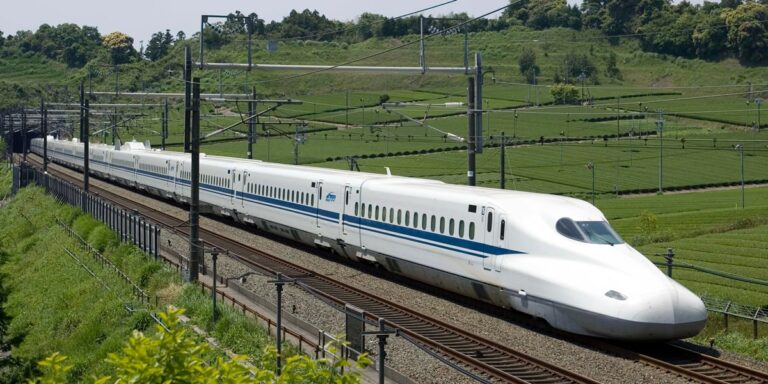DALLAS, Texas (KBTX) – For the first time since announcing its partnership with Texas Central Railroad, Amtrak has met with KBTX to discuss plans to bring high-speed rail to the region in an effort to revolutionize transportation within and beyond Texas.
Andy Byford, Amtrak's senior vice president of high-speed rail, spoke about key factors such as service development planning, community engagement and land acquisition at the Southwestern Railroad Conference hosted by the nonprofit Texas Rail Advocates. and shared details of the current status of the project. And funding.
Mr. Byford outlined the three phases of the Corridor Identification (CID) program and highlighted the continued development of the Service Development Plan (SDP). He emphasized collaborative efforts with the Federal Railroad Administration (FRA) to provide the necessary information in a timely manner and expressed optimism for completing this step by mid-June.
Community engagement emerged as a central theme, with Byford acknowledging the diversity of opinions surrounding the project. He highlighted Amtrak's commitment to transparency, citing continued efforts to address concerns raised by stakeholders, including local elected officials and residents.

“We understand that not everyone is a fan of this project. We understand that this is a democracy and people have a right to their opinion, and as Amtrak We understand that we have to make the case, and we can't just push these things through. We have to properly explain the benefits of the project and properly consult with the community and our elected officials. “Hmm,” Byford said.
“Political will is always another big challenge. Can we get enough political support? That in itself is a reflection of community support,” Byford added.
He said the need for the project stems from projected population growth and increased congestion on existing transportation arteries such as Interstate 35 and Interstate 45. Byford described high-speed rail as a proven solution used in developed countries around the world, and stressed the urgent need to consider alternatives to alleviate future congestion on interstates and airports. did.
“I think time is of the essence, and I think I look at it from a micro perspective as well as a macro perspective. The reason I say that is because this goes beyond Dallas to Houston. Because I think, as a citizen, and of course I'm a newcomer to this country, the alternative is to put Americans on ever more congested interstates and blame the taxpayers. I think it's just making them pay for the ever-expanding freeways and potentially condemning them to continue using them, which will make the airports even more congested,” Byford added.
Despite the backlash, Amtrak remains persistent in its efforts to make the project a success, he said. Mr. Byford emphasized the importance of understanding and addressing different perspectives, emphasizing the potential benefits for the majority.

“I think if we were trying to please absolutely everyone, the interstates would never have been built. Sometimes you at least listen to people, listen to their opinions, go see them, talk to them about their concerns. Sometimes I think the purpose is to give people the decency to listen and try to address them,” Byford said. “It's not always possible to satisfy everyone. If what you're trying to do is provide a public good, it ultimately benefits the majority. ” Byford said.
Regarding land acquisition, Mr. Byford provided detailed insight, indicating that approximately 30% of the land required was procured by Texas Central. Negotiations are ongoing for the remaining parcels.
Challenges remain, including securing political support, finalizing funding, and obtaining remaining rights of way. But Byford exuded confidence in the project's potential and the strong demand for high-speed rail, especially during the coronavirus pandemic.
“One of the first things Amtrak did when taking over the project was to undertake a study to see if the demand would exist post-COVID,” Byford said.

“So our forecasts, the actual forecasts of projected ridership, are very strong. And that's the thing: to actually put a plow in the ground and make this happen, the business case for the capital investment. ”Byford added.
Byford said if all goes well, the project could be completed in the early 2030s.
“If we are successful in putting together a funding package, which will take about a year in itself, we will open the line with the aim of opening in the early 2030s. It includes everything you have to do,” Byford said. “So watch this space. There's still a lot of big hurdles to get over. But I really think if we can pull it off, it's going to be an absolute jewel in the Texas crown.” Byford added.
At the Southwestern Railroad Conference in Hearst, Amtrak executives said high-speed rail is “critical to America's success.” He said the company is looking at how to connect cities in the Texas Triangle because demand is growing. The only other option, he says, is to continue widening the road. pic.twitter.com/Og0d7aST3z
— Alan Scaia (@scaia) April 16, 2024
Copyright 2024 KBTX. All rights reserved.

